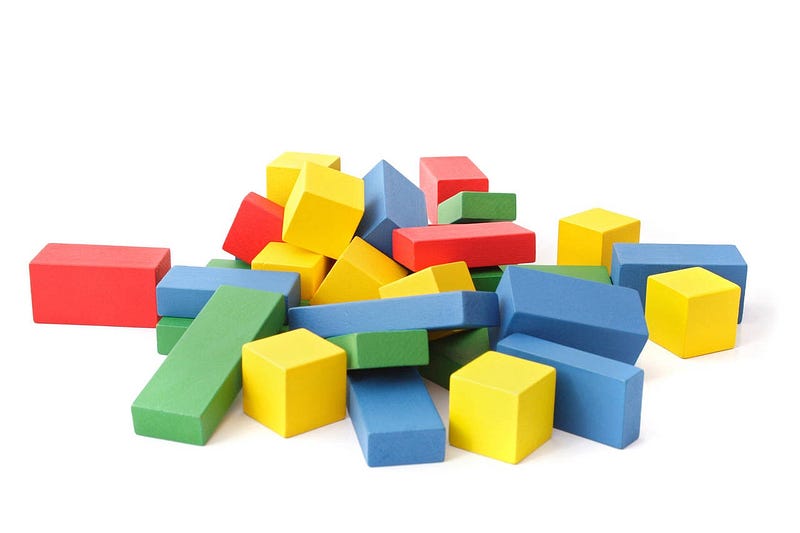Understanding the Irreversibility of Time's Arrow
Written on

Most scientists attribute the one-way direction of time, often referred to as the arrow of time, to the second law of thermodynamics. This law asserts that in an isolated system—such as the Universe—entropy can only increase.
But what exactly is entropy? In simple terms, it quantifies the number of microscopic arrangements that a collection of elements can adopt to form a larger entity.
The quantity of possible arrangements is influenced by the number of elements in the group and the various ways these elements can be organized. This principle is applicable regardless of the type of elements involved, whether they are atoms, playing cards, or pieces of information; the underlying concept remains consistent and relates to the level of order (or disorder) in the system.
For instance, consider a mechanism that randomly places three coins into three boxes. How many distinct ways can the coins be allocated? Through experimentation, we can determine that there are exactly 10 configurations. This includes three scenarios where all coins are in one box (A, B, or C), two where two coins occupy box A and one is in B or C, and so forth. Adding these possibilities yields 3 + 2 + 2 + 2 + 1 = 10.
Now, if we have 30 coins distributed randomly across the same three boxes, the arrangements increase dramatically to 496. Out of these configurations, only three result in all coins being in the same box (A, B, or C). Thus, with three coins, the chance of achieving a highly skewed distribution (one box full) is 30%, which is relatively high. Conversely, with 30 coins, the probability of a similar skewed outcome (all coins in one box) drops to only 0.6%.
What happens if we instead have 20 coins in one box? To calculate this, we first need to determine the possible arrangements of the remaining 10 coins in the other two boxes. The possible combinations are as follows:
- A 20, B 10, C 0
- A 20, B 9, C 1
- A 20, B 8, C 2
- A 20, B 7, C 3
- A 20, B 6, C 4
- A 20, B 5, C 5
- A 20, B 4, C 6
- A 20, B 3, C 7
- A 20, B 2, C 8
- A 20, B 1, C 9
- A 20, B 0, C 10
This totals 11 combinations, which expand to 33 when considering that any of the three boxes could contain 20 coins. Given that the total configurations with 30 coins are 496, the likelihood of a random distribution with 20 coins in one box and 10 in the others is 6.7%, significantly more probable than the 0.6% for the extreme distribution of 30 coins.
Next, let’s evaluate the case of having 10 coins in one box and 20 in the others:
- A 10, B 20, C 0
- A 10, B 19, C 1
- A 10, B 18, C 2
- A 10, B 17, C 3
- A 10, B 16, C 4
- A 10, B 15, C 5
- A 10, B 14, C 6
- A 10, B 13, C 7
- A 10, B 12, C 8
- A 10, B 11, C 9
- A 10, B 10, C 10
- A 10, B 9, C 11
- A 10, B 8, C 12
- A 10, B 7, C 13
- A 10, B 6, C 14
- A 10, B 5, C 15
- A 10, B 4, C 16
- A 10, B 3, C 17
- A 10, B 2, C 18
- A 10, B 1, C 19
- A 10, B 0, C 20
This results in 21 combinations per box, leading to a total of 63 configurations. Thus, the probability of having 10 coins in one box and 20 distributed among the others is 12.7%—over 20 times more likely than the distribution with 30 coins in one box.
From these examples, it is evident that the least likely scenario is when a single box holds all 30 coins. Distributions become more probable as the number of elements in each box becomes more balanced. In other words, a less asymmetrical distribution has a higher likelihood.
This tendency becomes even clearer with larger quantities of coins. With just three coins, there is a high probability (30%) of a highly imbalanced distribution. However, with 30 coins, that probability plummets to 0.6%. The more coins involved, the less likely extreme distributions become.
This statistical observation applies broadly to any random distribution of particles and energy, yielding significant implications for physical systems. In any transformation within a closed system, particles and energies will distribute themselves in ways that achieve the most probable configuration, typically the one with minimal distribution differences.
While extreme configurations are theoretically possible, they occur extremely rarely in practice, with this frequency depending on the number of items and their possible configurations.
This insight encourages us to consider that both ourselves and our surroundings consist of an immense number of atoms and molecules. For example, a single ice cube contains around 10²? water molecules (10 million billion billion). The number of molecules in the liquid water surrounding the cube is even greater. When these molecules begin to exchange energy, the likelihood of reaching a balanced temperature distribution among the water molecules is vastly higher than maintaining the temperature difference between the ice and the water. Thus, ultimately, the ice will melt, increasing the total entropy of the system as it transitions from a more orderly state with noticeable temperature differences to a more disordered one where the majority of water molecules share a similar temperature.
In summary, due to simple statistical probabilities, it is virtually impossible for an ice cube to remain frozen in room temperature water. Observing an ice cube emerge from a glass of water can only occur in a movie played in reverse, not in reality. However, it is essential to note that it is not physically impossible for individual frozen water molecules to transfer energy to liquid water molecules. On a microscopic scale, there is evidence that the second law of thermodynamics can indeed be violated, as physicist James Clerk Maxwell pointed out in a review published in Nature in 1878:
> "The truth of the second law is … a statistical, not a mathematical, truth, for it depends on the fact that the bodies we deal with consist of millions of molecules… Hence the second law of thermodynamics is continually being violated, and that to a considerable extent, in any sufficiently small group of molecules belonging to a real body."
Nevertheless, the total entropy of a macroscopic system can only increase due to the overwhelming influence of the law of large numbers.
Regrettably, our experiences occur solely at a macroscopic level. We interact with objects made up of trillions of atoms and molecules, behaving according to the probabilistic rules demonstrated in the coin and box analogy.
This leads to events possessing an irreversible nature. In every transformation, the total entropy rises, contributing to greater disorder. The order that we, as intelligent beings, manage to create locally is counterbalanced by increased disorder in the Universe at large, with this payment often manifesting as heat released into space.
It is this statistical principle, which indicates that transformations involving macroscopic objects result in an inevitable rise in entropy, that lends irreversibility to time. In nature, it is impossible for fragments of a broken glass to spontaneously reassemble into an intact piece, even though no physical laws would be violated if such an event were to occur. For the same probabilistic reasons, time travel remains highly improbable. To travel back in time would necessitate reverting the universe, or parts of it, to a state of lower entropy. Imagine traveling back to when a twig was intact before being tossed into a fire and reduced to ash; this would require a decrease in the total entropy of the Universe.
The law of large numbers, in relation to ourselves and our environment, seems to categorically prohibit the possibility of rewinding the "tape" of events. Since reducing the total entropy is not feasible, we cannot reverse the arrow of time either.

